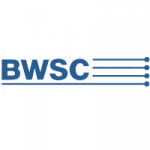Beware Fire Risk Assessments
The fundamental requirement of modern fire safety legislation is centred on the completion of a fire risk assessment, to identify any potential risks to the safety of persons in respect of harm caused by fire. Indeed, the risk of fire in public sector buildings is forever present; with more than 22,000 fires in non-domestic buildings during 2013-2014 (Source: UK Fire Statistics).
Any organisation must carefully consider the possible outcomes of the assessments before commencement. A fire safety risk assessment is a vital tool in managing fire safety compliance for a stand-alone building, but what if you have an extensive commercial building portfolio? How can you put the right steps in place and then successfully manage things, especially from a central location?
Many people feel that carrying out a Fire Risk Assessment constitutes a successful completion of the job, or that it is a pass or fail issue. Not true. The completion of a fire risk assessment must not be seen or interpreted as ‘job done’, or a snapshot examination. Many organisations stand or fall by the way they consider their approach to fire risk assessment and what happens next.
To use a simple analogy, ‘why would you get in your car and commence a car journey when you did not know where you wanted to go?’ Therefore , to commence a programme of fire safety risk assessments across your property portfolio without carefully considering what the likely outcomes could be and how any remedial actions will be managed has the potential to create chaos at best, and significant exposure in a worst case scenario.
Prior to commencing any fire risk assessment programme, you need to consider where you want your journey to end, and how you wish to progress the resulting information and any subsequent actions.
Things to think about could include:
- Fire protection issues and immediate life/building risk;
- Central policy requirements;
- Building and remedial works;
- Training;
- Business continuity and emergency planning;
- Budgetary constraints.
The completion of an effective programme of fire risk assessments, on any organisation’s property portfolio, is not the finishing and publication of the reports, but simply the springboard into the next phase. The reports will identify any measures necessary to achieve compliance. Therefore, time spent planning and implementing a fire risk assessment programme, including possible outcomes, actions and strategic responses in advance , can have a major benefit and save considerable delays going forward . It will certainly help demonstrate to the enforcing authorities a consistent and responsible approach to fire safety management.
An effective fire risk assessment programme must consider the above issues and then build them into the process; this includes:
- The creation of fire risk assessment templates specific to premises and how they are used;
- Quality systems cross-referencing essential guidance and policy documents;
- Resulting reports and ongoing management requirements;
- Effective ongoing measurement and reviewing of actions taken;
- Structured reporting based on organisational hierarchy;
- Training risk assessors to achieve co-ordinated consistency;
- Implementing quality measures to prevent inconsistencies and discrepancies.
At DDS (International) Ltd, we can work with you to ensure that all aspects of your fire safety legislation requirements are implemented, together with ongoing operational support. We have a team of project managers and fire safety experts that are not only highly experienced and fully qualified, but who will work with you to deliver your requirements, and provide ongoing support and assistance along the way.











Comments are closed.